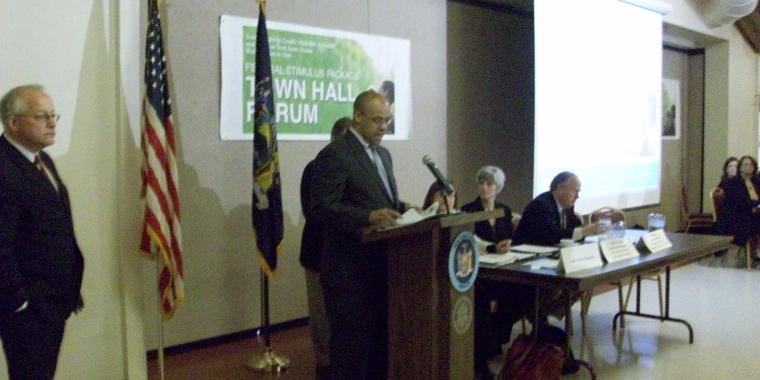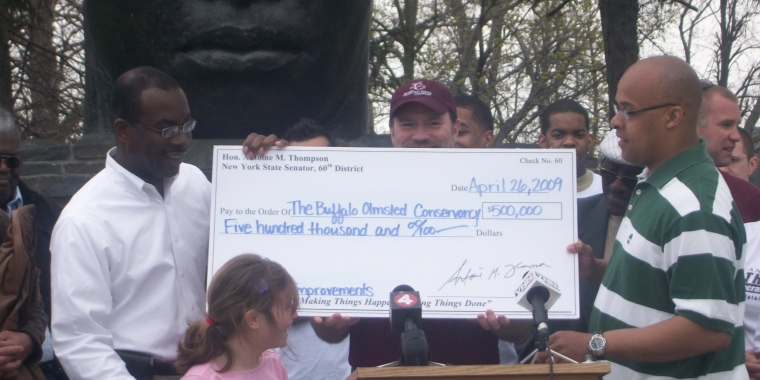
Historic Rehabilitation Tax Credit Passes Senate
Antoine M Thompson
May 27, 2009
Albany, NY- Today, Wednesday, May 27, 2009, NYS Senator Antoine M. Thompson (D-parts of Erie and Niagara Counties) and the New York State Senate unanimously passed a vitally important economic stimulus and community revitalization program: the Historic Rehabilitation Tax Credit (HRTC) (S2960-B/Valesky).
"This legislation will spawn investment, increase property values and create jobs," stated Senator Antoine M. Thompson.
HRTC strengthens the State program first launched in 2006 and will make New York State more competitive against the nearly 30 other state’s with similar programs, who have had more success. The changes will allow the state to target reinvestment to distressed communities, as determined by the U.S. Census, and incorporate cost savings to the administration of the program.
Because of these changes, New York State will have among the most productive and cost-effective redevelopment programs in the country.
The bill passed the Senate with unanimous support and is expected to pass the Assembly. Senators are working with the Governor to ensure that, based on the program’s ability to attract new investment, business, and jobs to the state at a time when our economy is struggling, it is signed into law.
Features of the Senate’s legislation include:
· Increase the cap on commercial credit value from $100,000 to $5 million; the residential credit value will increase from $25,000 to $50,000. These are over the course of the program, which is 5 years.
· Limit the availability of the residential and commercial credit of the program to “distressed” areas, which is defined as being located within a Census tract identified at or below one hundred percent of the median family income.
· Increase the percent of qualified rehabilitation costs that can be claimed for the credit from 6-percent to 20-percent, allowing for a higher percentage of qualified rehabilitation costs.
· Make the credit assignable, transferable, and conveyable within business partnerships, to allow for greater flexibility on the part of the investor, and attract out-of-state financing to in-state rehabilitation projects.
· Offer the rehabilitation tax credit as a rebate to make the program a stronger financial incentive for homeowners without significant income tax liability.
“Rehabilitation and reuse of historic buildings using a tax credit program has proven nationally to be one of the most successful policy tools in economic and community development,” Senator Thompson said. “New York State is blessed with many beautiful historic buildings. Not only will this program preserve our State’s rich history, it will help businesses restore historic income-producing buildings by making preservation work more affordable and at the same time creating jobs.”
Share this Article or Press Release
Newsroom
Go to NewsroomWestern New York - Town Hall Stimulus Meeting
May 7, 2009



